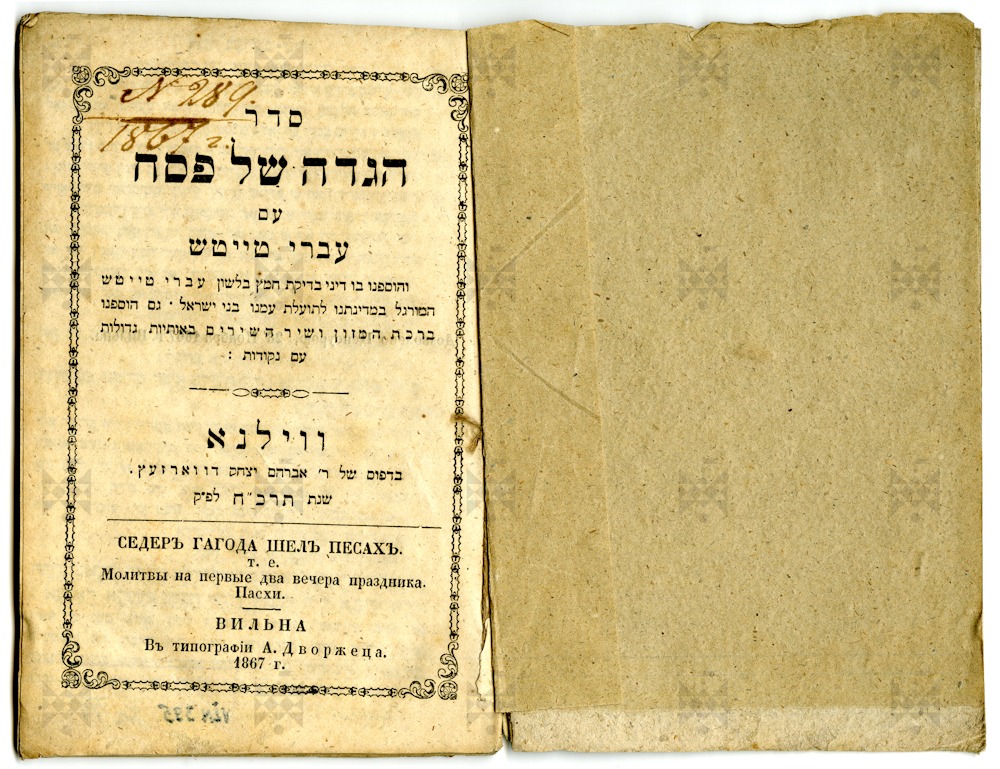EXHIBIT OF THE MONTH |
← |
Published: 2021-04-03
At the end of March – early April 2021, starting on the eve of the 15th day of the month of Nisan according to the Jewish calendar, Lithuanian Jews, like the entire Jewish community in the world, celebrate Pesach, one of the most important holidays for Jews, marking the exit of Jews from slavery in Egypt. The festival lasts for eight days (seven in Israel).
The key rituals of the festival are related to abstaining from fermented products on all days of the festival, eating unleavened bread matzah, performing a ritual dinner ceremony seder (Hebrew for order) on the first two evenings of the celebration (in Israel – only on the first evening), and read the Pesach story (Haggadah Shel Pesach in Hebrew), which tells about the Jewish exodus from Egypt, explains the meaning of the festival and the key rituals of the seder (matzah, charoset, bitter herbs, etc.).
Pesach Haggadah performs the function of a guide, both in preparation for the celebration and during the ritual dinner. It consists of fragments of the Torah (Book of Exodus), their interpretations, stories, prayers, and psalms of praise. It is an obligation for every Jew to listen to the Haggadah read through the seder and to follow the text of the Haggadah by themselves. The participants of the seder are experiencing the exodus of the Jewish people from slavery to freedom, from Egypt to the Promised Land, as if they had taken part in the exodus themselves.
Our museum holdings contain Seder Hagada Shel Pesach printed by Abram Dvorzec Printing House in Vilnius in 1867 with attached prayers, blessings in Hebrew and explanations in the so-called Hebrew-German (Ivri Taitsh)language.
Abram Dvorzec opened his printing house in Vilnius in 1829. In 1836, the government of the Russian Empire banned Jewish printing houses throughout the empire, with the exception of one in Kiev and one in Vilnius. From 1837 to 1862, the Romm Family Printing House in Vilnius had a monopoly on printing Jewish books. In 1862, after the ban on printing Jewish books was lifted, Dvorzec resumed the activities of his printing house, which continued to operate till 1941.
Sources
1. Jews in Lithuania. Compiled by Larisa Lempertienė, Jurgita Šiaučiūnaitė-Verbickienė. Vilnius, 2009
2. Zingeris, Emanuelis. Philological Etudes: Holdings of Books in Hebrew and Yiddish in Lithuania. From The Jewish Museum. Vilnius, 1994, pp. 58–70.
Prepared by Ilona Murauskaitė, Head of Inventory, Research and Conservation of Holdings Department.
© Photograph courtesy of Paulius Račiūnas.
© From the holdings of VGMJH.
| ↑ | ← |


